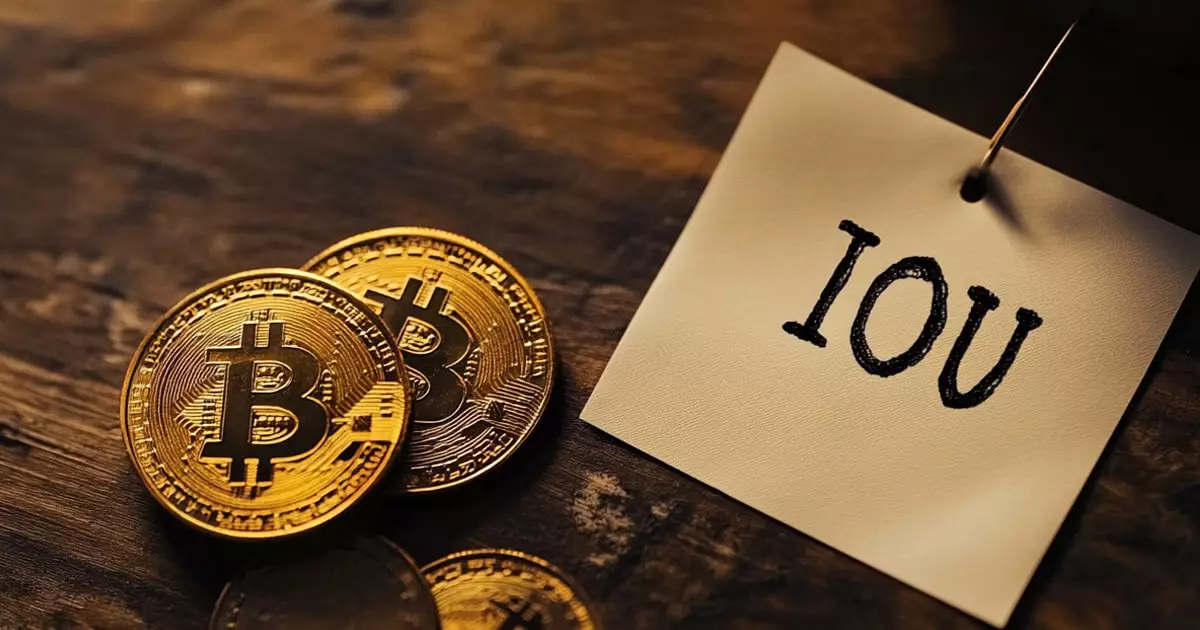In the ever-evolving landscape of cryptocurrency, allegations and speculations can take root, often leading to confusion and panic among investors. Recently, an uproar surrounded Coinbase, a prominent cryptocurrency exchange, which purportedly came under fire due to allegations that it was misusing funds from BlackRock for some of its ETF operations related to Bitcoin (BTC). This narrative, which gained traction on social media platforms, insinuated that instead of securing actual Bitcoin, Coinbase was merely issuing letters of debt in relation to the IBIT ETF. Such claims stirred a wave of speculation, suggesting that Coinbase was somehow manipulating Bitcoin’s market price to its own advantage.
Bloomberg’s senior ETF analyst, Eric Balchunas, was among the first to counter these allegations, deeming them unfounded and absurd. He emphasized that BlackRock, known for its rigorous operational integrity, would be highly dissatisfied if Coinbase was indeed involved in any form of deception regarding their Bitcoin investments. Balchunas pointed out the serious regulatory implications such actions would entail, revealing the underlying fragility of the accusations. Furthermore, he elaborated that Bitcoin investors frequently look for external scapegoats for the downward pressure on BTC’s price, neglecting the fundamental issues at play.
Coinbase’s CEO, Brian Armstrong, also spoke on the matter, asserting the transparency of their operations. He highlighted that all minting and burning related to the firm’s ETFs are settled on-chain, ensuring a clear and verifiable ledger that counters any allegations of malfeasance. Armstrong articulated that institutional clients maintain the option for off-chain transactions, which adds another layer of legitimacy to Coinbase’s operations. He stated that these practices are fundamentally designed to attract institutional investors into the Bitcoin ecosystem, which is paramount for the currency’s growth and stability.
The circumstances surrounding these allegations can largely be attributed to a combination of market sentiment and investor psychology. Balchunas dissected the situation, suggesting two primary reasons contributing to the development of such theories. The prolonged downtrend of Bitcoin since March has left many investors frustrated and seeking reasons for the market’s stagnation, leading them to develop conspiracies that can sometimes appear more palpable than reality. As Balchunas aptly noted, instead of introspection, many find solace in blaming external forces, such as ETFs.
Additionally, there is an underlying skepticism that many Bitcoin advocates harbor towards traditional financial institutions and government entities. This sentiment echoes historic accusations related to gold ETFs, where “gold bugs” derisively referred to synthetic forms of gold as “paper gold.” Thus, the same skepticism translated into criticism of Coinbase, drawing parallels between the two markets. This psychological backdrop indicates not just a distrust of institutional fidelity but reflects a desperate search for clarity in a tumultuous market.
Adding fuel to the already contentious atmosphere is Coinbase’s introduction of a new synthetic Bitcoin product, dubbed cbBTC, which quickly reached a market capitalization of over $100 million upon launch. Critics, including Tron founder Justin Sun, raised alarms regarding the legitimacy of cbBTC, claiming it lacked transparency concerning proof of reserves. The fear of government intervention, where authorities could freeze user balances at any moment, further amplified concerns that cbBTC essentially represented a form of “trust me” finance, thus undermining the core value proposition of decentralization that Bitcoin promises.
Armstrong’s defense of cbBTC, emphasizing that users must trust a centralized custodian for Bitcoin storage, highlights an essential dichotomy within the crypto space: the struggle between centralized and decentralized financial solutions. While Coinbase provides an avenue for institutional investment into Bitcoin through secured products, it also evokes sentiment from the purists who prioritize complete independence from centralized entities.
The controversy surrounding Coinbase reflects broader themes within the cryptocurrency community, including trust, regulatory oversight, and psychological market behavior. While allegations can be easily propagated, understanding the underlying frameworks, both regulatory and emotional, is critical to navigating this space. As the cryptocurrency ecosystem continues to mature, fostering a nuanced understanding will be key to overcoming misinformation and nurturing a more stable market environment. The path forward lies in transparency and dialogue, bridging divides between institutional innovation and grassroots skepticism to cultivate an inclusive and trust-driven digital economy.















